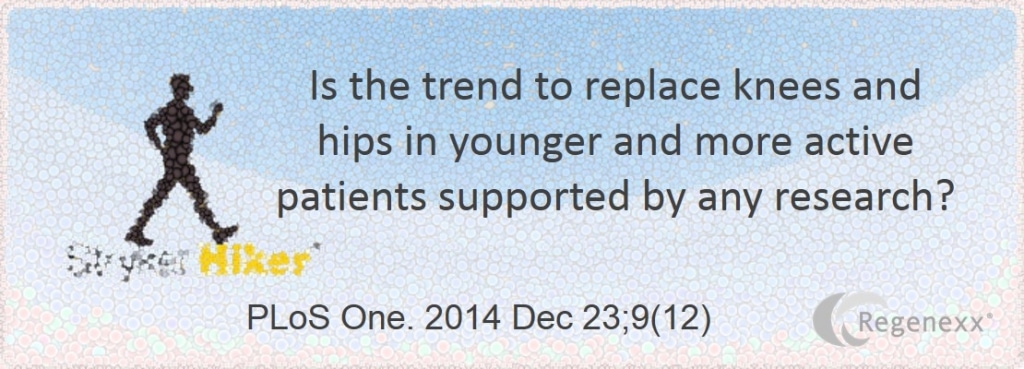Do More Active People Do Better with Hip and Knee Replacements?
You can’t watch TV without seeing commercials with young and active people advertising the latest knee and hip replacement device. In fact, with knee and hip arthritis rates soaring in younger people, the manufacturers of these devices have found a new and bigger market than the elderly. However, all of this is based on that concept that more active patients will sail through a hip or knee replacement to end up being active after the surgery. What if this wasn’t true?
Knee and hip arthritis rates and thus the numbers of joint replacement surgeries are exploding, especially in developed countries like the United States. Direct to consumer marketing has followed these trends. Not only are we seeing television commercials with patients climbing mountains and running after surgery, but one company even has an iPhone app (pic above) that’s focused on hiking! Despite commercials showing active people after joint replacement surgery, one recent study showed that almost half of patients who undergo a knee replacement surgery still take pain medication one year after the surgery. In addition, another study showed that the reason for this medication use is that many patients continue to have pain even after their knee or hip joint is surgically replaced.
The new study decided to test the concept that more active people will do better after a hip or knee replacement surgery. The study’s authors looked at more than one thousand patients who filled out an activity questionnaire before a hip or knee replacement surgery and then were tracked for activity and recovery after the surgery. Surprisingly, the pre-operative activity level of the patient had no relation to the degree of recovery one year after the surgery!
The upshot? This study just shot down a widely held belief that the reason we should be performing more joint replacement surgeries on active patients is that they will recover more quickly. When this result is combined with other studies showing that few patients are able to return to high activity levels after these surgeries, one has to wonder if device manufacturers advertising knee and hip replacements to ever younger and more active patients is wise.

If you have questions or comments about this blog post, please email us at [email protected]
NOTE: This blog post provides general information to help the reader better understand regenerative medicine, musculoskeletal health, and related subjects. All content provided in this blog, website, or any linked materials, including text, graphics, images, patient profiles, outcomes, and information, are not intended and should not be considered or used as a substitute for medical advice, diagnosis, or treatment. Please always consult with a professional and certified healthcare provider to discuss if a treatment is right for you.
